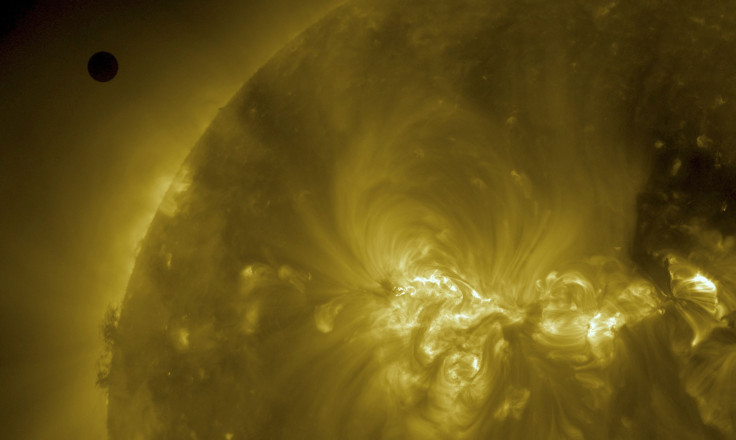Electric winds may suck out Earth-like planets' upper atmosphere into space, scientists claim

NASA has reported that an “electric wind” can strip Earth-like planets of oceans and atmosphere. The statement came after it was found out that planet Venus has an electric wind that is strong enough to remove components of water from its upper atmosphere. Scientists believe that this may have played a major role in stripping the planet of its oceans.
New results from the European Space Agency’s (ESA) Venus Express mission that was funded by NASA have been described as “amazing” and “shocking.” Glyn Collinson from NASA’s Goddard Space Flight Center in Greenbelt, Maryland, said that scientists could never dream that an electric wind can be so strong that it could suck oxygen out of an atmosphere into space.
Collinson added that scientists should keep these electric winds in mind when they go searching for other habitable planets around different stars. He is the lead author of the study that was published in the journal Geophysical Research Letters.
The scientists explained that when water molecules rise into the upper atmosphere, sunlight breaks them into hydrogen ions that escape easily. The electric field carries away the heavier oxygen ions. Venus is the most Earth-like planet in our Solar System and there is evidence that the planet had oceans in its distant past.
However, its surface temperatures of 460 degree Celsius eventually boiled away all its oceans to steam and the planet became uninhabitable. The steam dissociated into hydrogen and oxygen. The hydrogen escaped while the oxygen oxidized rocks over billions of years.
“We found that the electric wind, which people thought was just one small cog in a big machine, is in fact this big monster that’s capable of sucking the water from Venus by itself,” Collinson noted in a NASA statement.
Earlier, scientists thought that solar winds were eroding the remainder of an ocean’s worth of oxygen and water slowly from Venus' upper atmosphere. The new study has revealed that it was a monstrous electric wind that was responsible.
Co-author of the study, professor Andrew Coates of the UCL MSSL, said that the electric field powering the escape of over 100 metric tons of ions per year is extremely strong. He believes that this phenomenon will help him understand how this universal process works. It is believed that as planets have a gravity field, they may also possess an electric field that always tries to push the upper layers of the atmosphere off into space.
Venus’ electric field was discovered using NASA-SwRI-UCL electron spectrometer and it revealed Venus’ electric field to be at least five times more powerful than at Earth. Understanding a planet’s electric winds may help astronomers improve their estimates of location and size of habitable zones around different stars.
“Even a weak electric wind could still play a role in water and atmospheric loss at any planet. It could act like a conveyor belt, moving ions higher in the ionosphere where other effects from the solar wind could carry them away,” Alex Glocer of NASA Goddard said in the press release.
Watch Electric Wind of Venus here.
Source: YouTube/NASA Goddard





















